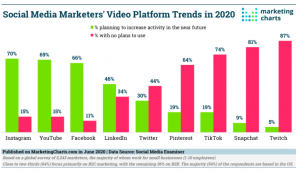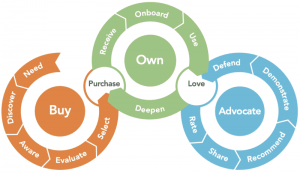
Artificial intelligence is no longer the stuff of the future. It is becoming an increasingly common part of our everyday lives, from the watches we wear that monitor our heart rate to the robots that vacuum our floors without any direction from us. Yet we have traditionally thought of artificial intelligence as similar to a robot that has a mind of its own and can act independently. While these robots would certainly qualify, they are not the only examples.
There are actually three types of artificial intelligence:
- Artificial Narrow Intelligence (ANI) can perform one particular task, such as vacuuming your floors.
- Artificial General Intelligence (AGI) can perform all things, like a human.
- Artificial Superintelligence (ASI) is the stuff of sci-fi nightmares because it can perform beyond the capabilities of a human.
Google — the leader in almost all things Internet-related — has introduced RankBrain, which is a machine learning algorithm. It is an example of ANI, just like the spam filters in your email or the “recommended products” feature on Amazon.
Connectionist Technology
Among the different types of AI technology, there are also different purposes. Some AI technology aims to make connections, others identify symbols or evolution, and other do more advanced computations.
Google’s RankBrain is connectionist technology, which means that it aims to make connections among the data that it analyzes. Just over two years ago, Google acquired DeepMind Technologies as a way to help it get more data and create more connections.
As people have become more reliant on technology for just about every aspect of their lives, they are providing more and more information that can be analyzed. The technology can then make even smarter connections and become more predictive.
In a very short amount of time, technology has rapidly advanced. The more progress we make as a society, the more quickly we can advance because we are constantly elevating the foundation from which we move forward.
Impact on SEO
Thanks to the law of accelerating returns, the growth of AI is expanding into all areas of society, including online marketing. In particular, AI is poised to make a big impact on SEO, thanks to RankBrain and other technologies that are surely being developed as we write this. The impact is already being felt.
In the past, most marketers have responded the same way to Google algorithm changes: They look at months of data leading up to and immediately following the algorithm change to determine how their ranking was affected and what aspects of their site were most likely to blame (or reward) for it.
However, with RankBrain, the algorithm doesn’t just look at a specific aspect of the site, such as the number of backlinks or the density of the keywords used. Instead, it considers each site to be unique, and it attributes varying weights to difference aspects of the site. Therefore, one site may be more influenced by its meta tags while another site may be more influenced by the anchor text used in its backlinks.
The same site could perform differently in separate search results even with the same characteristics. A different algorithm could be used for each search. Google is using the technology to better understand what “good” sites look like and what “bad” sites look like. That makes it a little hard for marketers to ensure that their site shows up as “good,” unless they have access to their own AI (which they don’t).
As always, one of the best ways to ensure you come out on top with search rankings is to create a quality site that focuses on providing a good user experience and on actually providing useful information to the reader. Focus less on tactics to promote your site, and focus more on creating high-quality content that your visitors will actually want to read.
Content Recommendation and Advertising
You may not have access to the advanced AI that Google has, but you can take advantage of other AI that can help you connect with your readers.
CodeFuel has several options that can help your site. In-tag solution for Instance is a content recommendation tool that relies on user-intent signals to promote the right content for the right user. Each time a visitor is on your site, the tool will analyze a variety of signals from that user to deliver content of interest. The links will be inserted in text and other elements on your page.
CodeFuel also offers an advertising platform that uses a variety of data to determine the best sites and platforms on which to place specific ads. That ensures that right customers see the right ads, increasing the possibility that they get the products and services they want and increasing sales and conversions for the advertisers. These tools work together to help your site offer more of what your visitors actually want and need, which will improve your SEO and help your site continue to stay in Google’s good graces.
Digital & Social Articles on Business 2 Community(70)
Report Post






